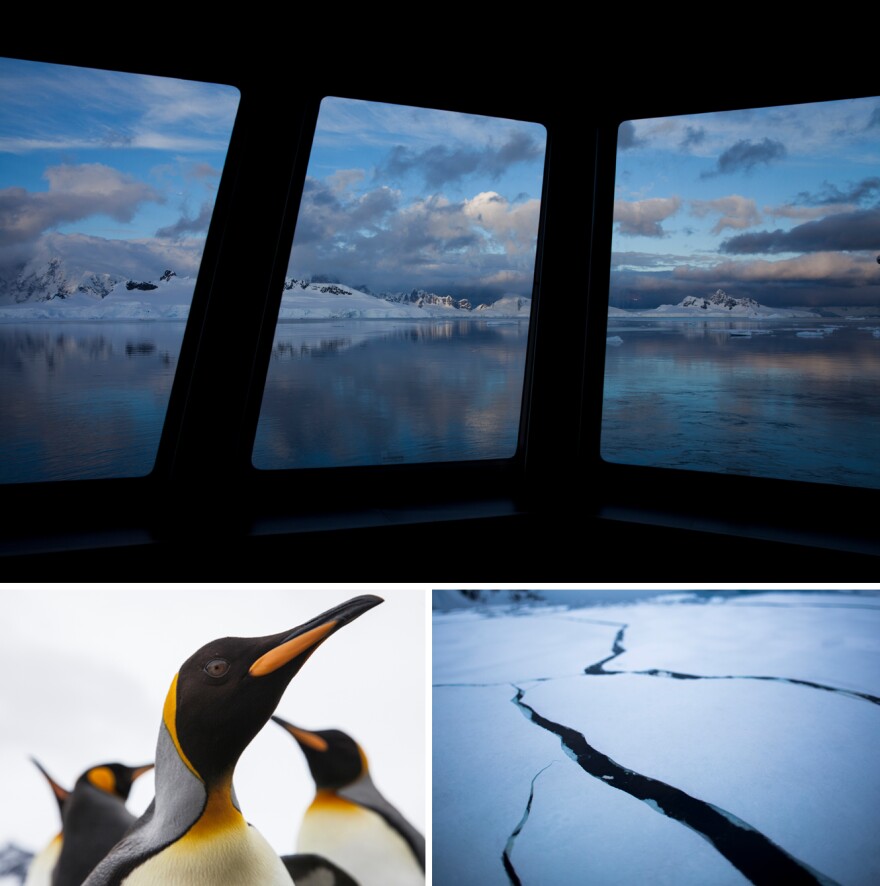When WAMU photographer Tyrone Turner got the opportunity to travel to Antarctica, he thought he would be fascinated with the continent's wildlife.
But instead, it was the ice — in its myriad shapes and textures, "bathed in polar light that morphed from powerfully sharp and blue, to gentle and pink" — that Turner says mesmerized him.
"Antarctica just seemed to me absolutely 'the other world,'" Turner says. "There is no other landscape like it."
Turner's trip to Antarctica last November began in the Falkland Islands, where he boarded the National Geographic Explorer for a three-week journey.

In the interview below, he shares more observations about the trip with NPR and how Antarctica defied his expectations.
Was there a moment when you knew Antarctica was going to be unlike any other place you'd been before?
We're photographing as the light goes down. The light went down at 10:15 a.m. It doesn't get completely dark at this point, and the sunrise is at 3:15 a.m., so I'm out on the deck until about 11 p.m. And I go back, get a couple hours of sleep, and I'm back on the deck at 2 a.m. Because as that light's starting to come up crystal clear, you have the pinks and the oranges and the blues of the predawn light with these icebergs that we're passing, and I fell in love.

I was totally captivated by that light and by these massive structures. I stopped sleeping at that point, because I just wanted to see that light every time.
What defied your expectations?
There is a power in the form and the massiveness of the ice. There's just a power in being near it. It really surprised me how I felt in the presence of these icebergs and the ice down there. You just really were at once excited and a little afraid.
The textures and the forms it comes in, was really unexpected. And I did not expect to be as affected as I was by being in Antarctica. I actually thought I would be really into the wildlife — and I was, I really loved that — but I think the ice moved me more.
But you did photograph wildlife, such as gentoo and king penguins. What was it like?
Penguins don't have very good eyesight, and they're very curious. So, if you just sit down, or lay down, they will come over and investigate. And in one picture, I was lying down — my camera gear's right here — here's this lichen-type covering — you're laying in feathers and penguin poop and stuff like that — and you just lay down and they come over to you. These penguins were really close to me and in fact were pecking at my camera bag.
Copyright 2023 NPR. To see more, visit https://www.npr.org.





